Dementia-Friendly Care Home Ideas
Posted on 9 May 2024 By Michael Wood
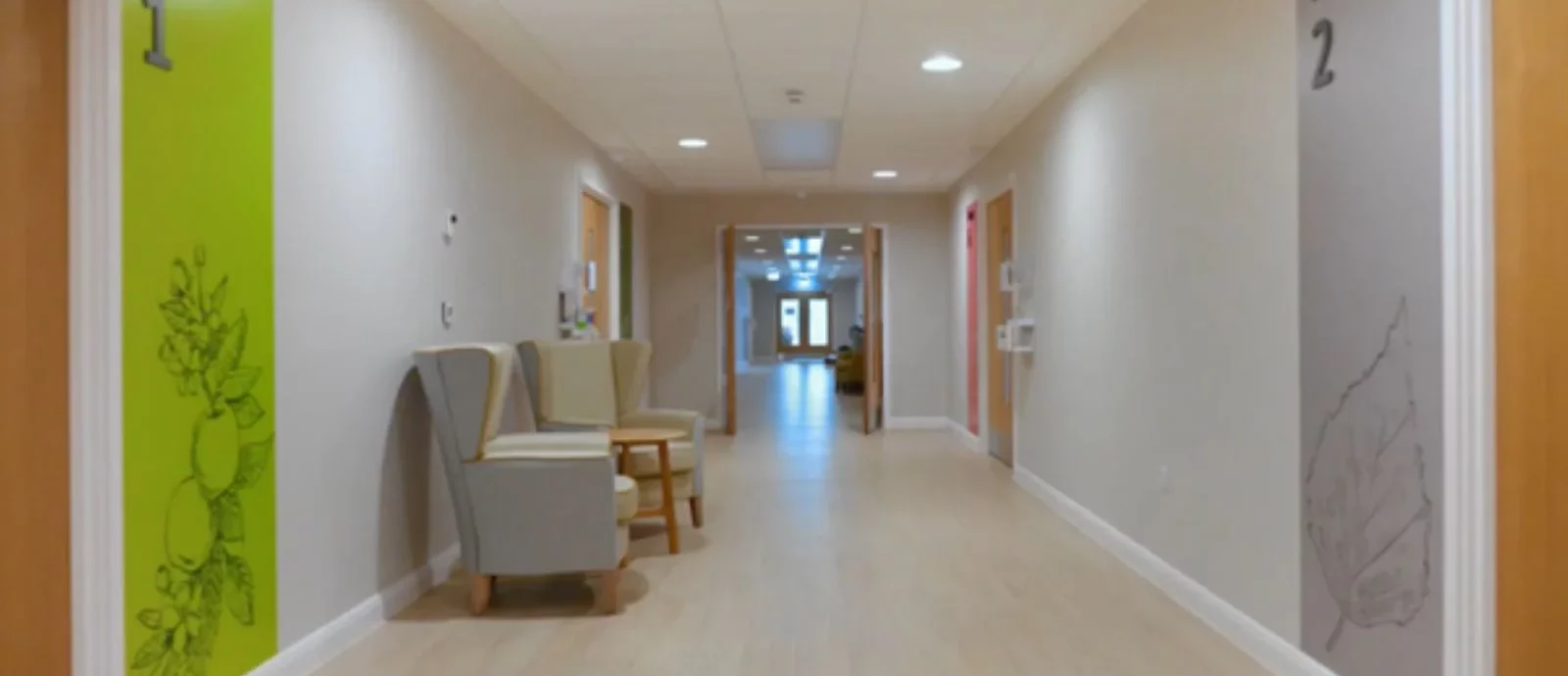
In This Article
What can hospices and care homes do to ensure they have a dementia-friendly care environment? Implementing effective dementia-friendly care home…
What can hospices and care homes do to ensure they have a dementia-friendly care environment? Implementing effective dementia-friendly care home ideas is essential for creating a supportive and safe space for residents. You may have come across the term ‘dementia-friendly’ on the news lately, or you may have even seen a ‘dementia-friendly’ sticker on the back of a police car. Attitudes and approaches towards individuals with dementia are changing for the better; society is now more clued-in on how to converse and connect with dementia patients.
The healthcare sector is evolving to facilitate their needs, and this can be seen in care environments that have started becoming dementia-friendly.
But the question is, how do you create a dementia-friendly care environment?
Jump Straight To –
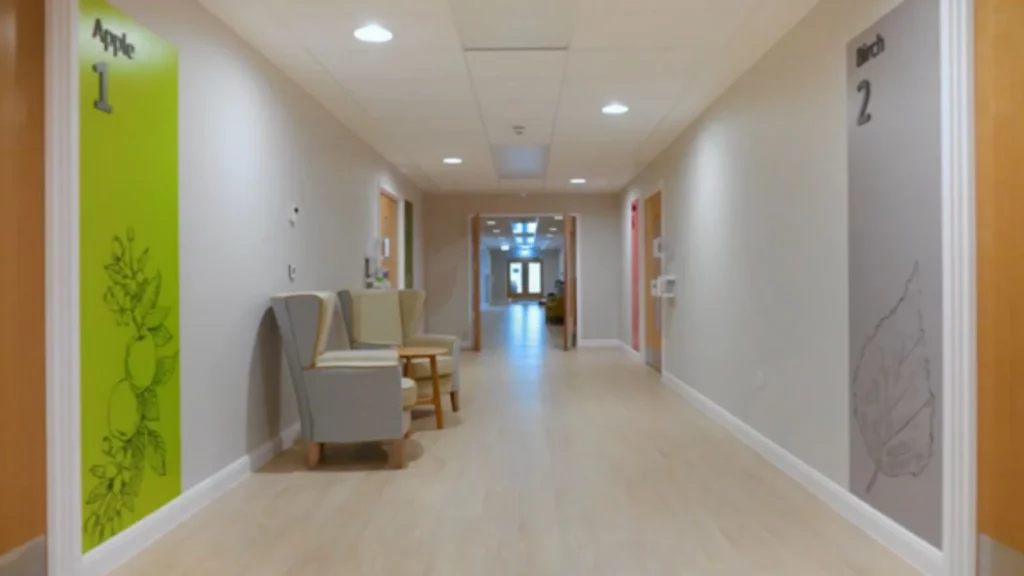
The Building: Key Dementia-Friendly Care Home Ideas
One of the biggest things to consider when creating a dementia-friendly environment is the building itself. Ideally, there is good visibility so that the residents can see where staff or carers are, and they can see outside.
It’s particularly beneficial to get as much natural lighting as possible, as this will increase visibility and minimize confusion and accidents for individuals who may have significantly reduced vision. It also helps residents to understand what time of day it is.
Structurally, there are a few things to be considered when it comes to those with dementia. Any dead-end paths or corridors can be very frustrating, so there should be a safe outdoor space for everyone (including families and visitors) to sit out and enjoy.
Ensuring there is plenty of natural light is a great way to increase visibility in a care space. Preferably, there will be a transitional layout that clearly demarcates between private spaces like bedrooms, and public areas like the reception or dining hall.
Noise can be quite distressing to people with dementia, so it’s important that the premises are in a peaceful area with very little external noise. Using sound-absorbing panels would be another way to decrease noise within the building itself. Residents may find it distressing or confusing if they can hear conversations in other rooms, especially whilst they’re trying to relax or sleep.
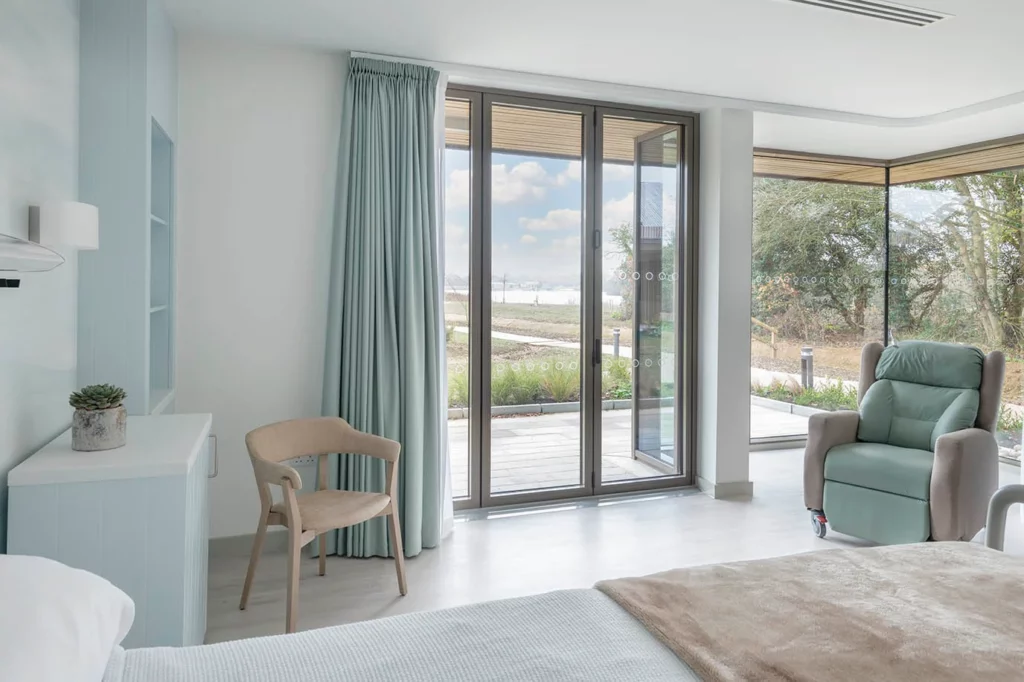
Ensuring there is plenty of natural light is a great way to increase visibility in a care space.
Preferably, there will be a transitional layout that clearly demarcates between private spaces like bedrooms, and public areas like the reception or dining hall.
Noise can be quite distressing to people with dementia, so it’s important that the premises are in a peaceful area with very little external noise.
Using sound absorbing panels would be another way to decrease noise within the building itself. Residents may find it distressing or confusing if they can hear conversations in other rooms, especially whilst they’re trying to relax or sleep.
Décor For Dementia: Essential Care Home Ideas
An increase in dementia studies over the past decade has provided a wealth of insight into how the aesthetics of the environment can affect the individual. For example, busy patterns and dull colours have proven to cause misperceptions in surface and depth. It’s important to avoid patterns on patterns and instead go for plain colours.
Having stark contrast between surfaces is also a good thing to keep in mind, as this will allow the individual to see more clearly between different levels and objects. Having stark colour contrasts can help with wayfinding, especially enhancing shapes and forms to prevent falls.
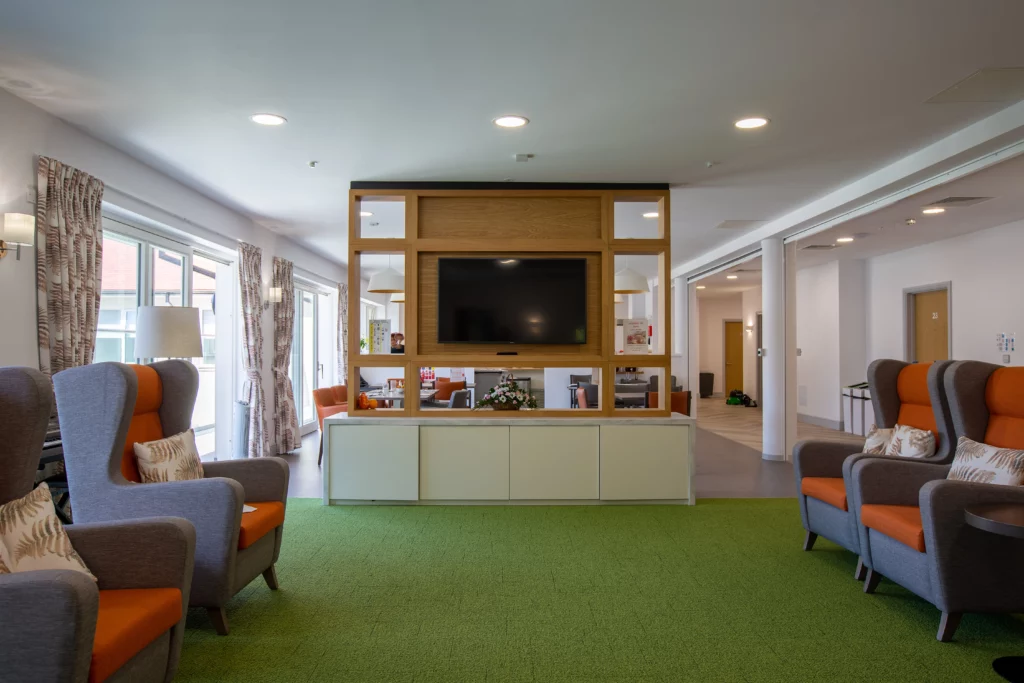
Having stark colour contrasts can help with wayfinding, especially enhancing shapes and form to prevent falls.
Shiny/reflective items can also cause confusion because they are difficult to see. Sparkly fabrics or floor coverings can be particularly difficult to navigate because the individual cannot clearly see the floor they want to walk on. It may also lead the resident to believe that the floor is slippery or wet.
Having nostalgic décor may help to make the individual feel more relaxed and at home. This subconscious familiarity with trends and décor from 50 or 60 years ago can make the resident feel more comfortable simply because it is familiar, unlike contemporary looks.
Signposting and Colour-Coding in Dementia-Friendly Care Homes
It is widely encouraged that rooms be clearly signposted to avoid unnecessary confusion and stress. Shared bathrooms are one of the most important rooms to signpost and will help to avoid any possible accidents. Any other corridor or room signage should be at eye level so that the individual can see it immediately. Pictures alongside words can be useful for providing extra clarity.
There should also be signage on the various items within the bathroom; the users should be able to understand the function of each component with ease. From the soap dispenser to the taps, easy-to-read signs on these will help to reduce confusion and anxiety, lending itself to a dementia-friendly care environment.
Colour-coding elements of the room has also shown to be an effective way to help individuals with dementia. St Catherine’s Hospice in Crawley has some fantastic examples of this, with their Pease Pottage facility including color-coded areas to help patients easily navigate between rooms.
How Innova helped St Catherine’s with their hospice fit-out.
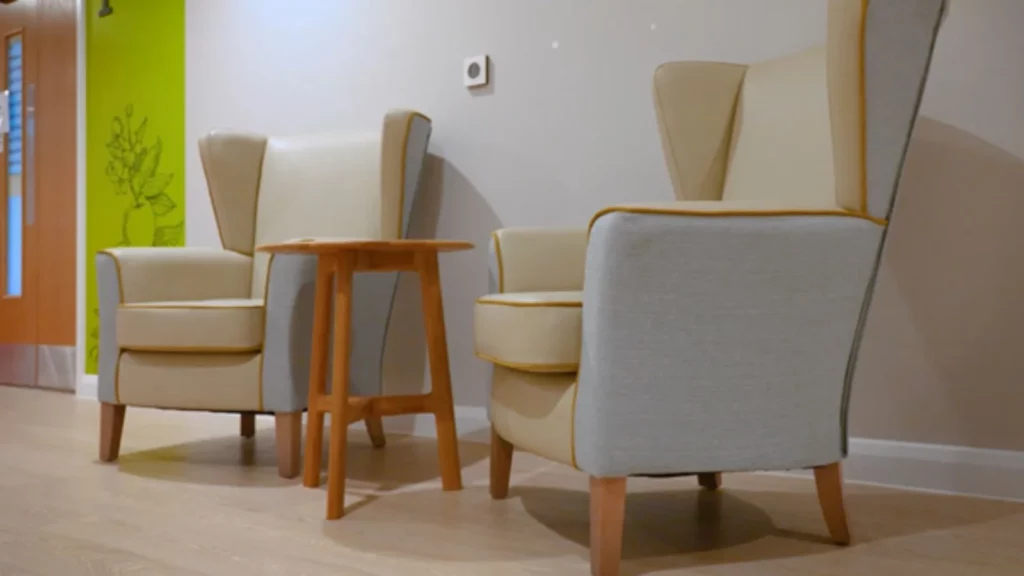
Innova helped St Catherine’s Hospice in Crawley with their design, including colour-coded areas and corridors to help with patient navigation of the hospice.
Active Environments: Key Dementia-Friendly Care Home Ideas
One of the main focuses of recent dementia studies has been on encouraging active participants and spaces. This means that residents are subtly urged to participate in day-to-day life and take part in activities that will stimulate their minds and bodies. Care spaces are changing their look and feel to actively encourage interaction and host activities.
A dementia-friendly environment will reflect this by having open communal areas with social seating and things that will allow individuals to pursue their hobbies and interests. Whether it’s jigsaws, knitting, or even a vegetable patch, including these things can make a world of difference and improve residents’ quality of life.
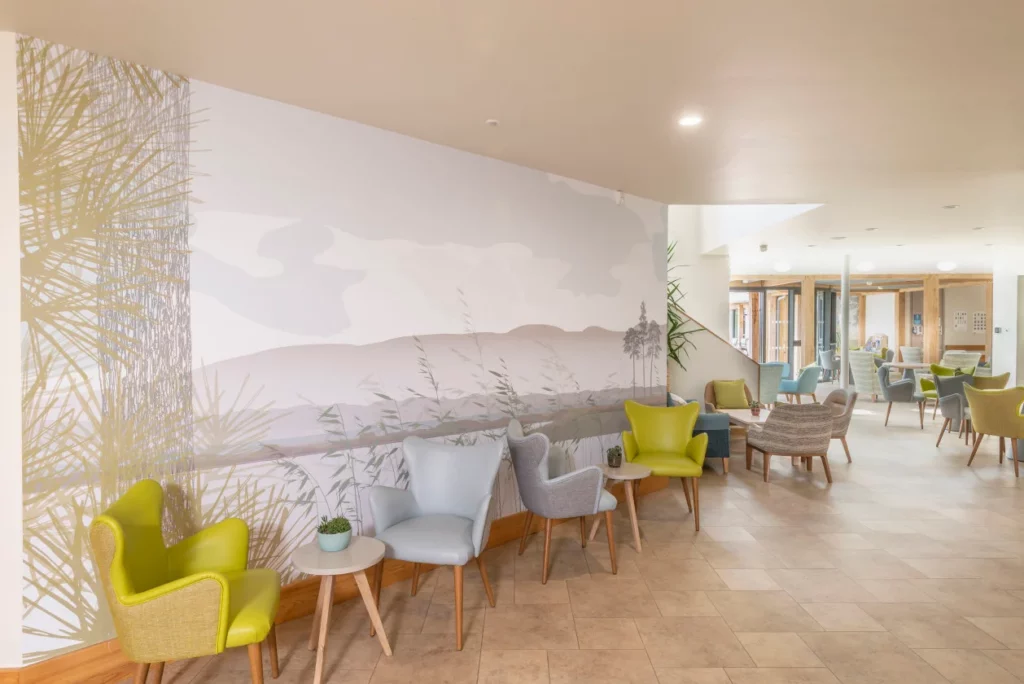
Care spaces are changing their look and feel to actively encourage interaction and host activities.
Summary
Creating a dementia-friendly care environment may seem daunting, but it’s not as difficult as you may think. Whether it’s a new building or a conversion of an existing care environment, dementia-friendliness can be achieved simply by adopting a few key changes. This will not only help to improve the individual’s quality of life but can also help to stimulate memory and possibly even slow down any further mental deterioration.
To find out more about how we can help transform your care space into a dementia-friendly environment, get in touch with one of our advisors by completing the contact form below.
Speak to The Experts
Need assistance with product enquiries, general inquiries, or product support? Our Phonelines are open 9am - 5pm Monday to Friday
0113 519 0319
Or, fill out the form for a call back.
